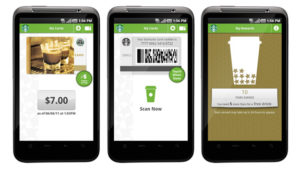The word ‘loyalty’ is banded about by marketers pretty flippantly nowadays but for many restaurant owners and operators, it really does make or break their business so they can’t afford to get it wrong. In a bid to avoid your loyalty program leaving a bad taste in your customers’ mouths, we’ve flipped it on its head and rounded up 5 of the most common loyalty mistakes brands make and a few tips and tricks for avoiding them.
1. Deploying a one-size-fits-all program
Everyone likes to feel special and customers tend to look favourably on brands that pay attention their individual needs. Your customers have different tastes; different buying habits; and like to interact with your brand in different ways so you should take that into consideration when rewarding them. Treat new loyalty customers differently from those who have been buying from you for years. Interact with younger customers differently from older ones.
In order to properly segment your customer base, you need your customers’ information. Without it your loyalty program is flying blind. One of the best places to capture customer data is during the ordering process and this can be done automatically using a mobile order and pay application.
Once your customers’ preferences and past buying behaviours have been properly analysed, you have a good basis for loyalty success. You can encourage new customers with offers on their favourite meals and continue to nurture relationships with long-term customers by rewarding them based on their months or years of custom.
Mani Osteria & Bar in Michigan, for example, deployed a loyalty app for its guests. From the restaurant’s perspective, a push notification alerts the staff when a signed-up guest arrives. Information, from how many times they’ve dined at the restaurant to customer feedback, preferences, and other relevant tips, is sent to the back of the house. That allows staff to treat the loyalty member on a more personal level.
2. Bombarding members with irrelevant offers
 You know who knows best when it comes to customer rewards? Your customers. They’re the heart and soul of your loyalty program so look to them when trying to figure out what calls-to-action or type of offer is most successful. By taking a scatter gun approach or overwhelming your guests with too many irrelevant offers, you run the risk of turning them off and at best unsubscribing, at worst switching to a competitor.
You know who knows best when it comes to customer rewards? Your customers. They’re the heart and soul of your loyalty program so look to them when trying to figure out what calls-to-action or type of offer is most successful. By taking a scatter gun approach or overwhelming your guests with too many irrelevant offers, you run the risk of turning them off and at best unsubscribing, at worst switching to a competitor.
As well as capturing customer data via the ordering process as mentioned above, you could tailor offers to customers further by adding social login as a loyalty action. This way you can create a more complete customer profile and send extremely personalised, relevant offers.
Restaurants like Bahama Breeze are using social throughout their loyalty and customer service initiatives. Using social login, Bahama Breeze automatically sends a personalised email thanking guests for visiting them and offering a discount on their meal when they check-in.
3. Failing to deliver seamless mobile loyalty
There’s nothing more frustrating than tech that doesn’t quite work so if you’re going down the mobile route, make sure it’s seamless. For example, if a customer orders something online, make sure their points are added to their account and that it is synched with their mobile. If you’re sending out mobile coupons or vouchers, make sure they’re redeemable in store by checking the mobile barcode scans or the coupon number can be input into the POS.
 By enabling interoperability between the web, mobile and POS, you can offer your guests a loyalty program that not only offers monetary value but also convenience and an enjoyable experience.
By enabling interoperability between the web, mobile and POS, you can offer your guests a loyalty program that not only offers monetary value but also convenience and an enjoyable experience.
Starbucks, for example, has ensured a seamless experience between their physical loyalty card, mobile loyalty card and web-based dashboard. Customers can earn free drinks, view their points, pay with their phone and earn extra rewards and they can choose to do it through the channel of that best suits them.
4. Not measuring the impact of the programme
Ever sat there sweating at the meeting table when your manager asks you how successful the project has been and you have absolutely zero quantifiable data? Once you’ve put in all that hard work to launch your loyalty program, don’t leave it there – measure its impact!
Take a baseline measurement of loyalty member numbers and experiment to see what offers get your guests excited and which aren’t so successful. Broaden your horizons when it comes to metrics, boosting sales might be one indicator but things like positive sentiment towards your brand, increased likes on Facebook and growing social interaction are all valuable measurements of loyalty success. Again, make sure you take a baseline measurement and track changes carefully so you know what’s driving them.
5. Not encouraging reward redemption
You can lead a horse to water but sometimes, mere exposure to an offer is just not enough to make it drink. In today’s busy world, it may be a hard to hear, but rewards redemption might not have made it to the top of your customers’ priorities. So why not give them a gentle nudge to remind them to redeem their points on their favourite dishes and drinks? You could also set an expiration date for points and rewards to create a sense of urgency for inactive members to return.
Gentle encouragement for members to redeem points and enjoy rewards can lead to greater redemption rates and keeps a positive form of communication going between you and your guests.
If you’re an operator who’s just deployed or is thinking of deploying a loyalty scheme, make sure you don’t fall victim to these common mistakes. By continually testing offers, measuring success, keeping communications open and putting your customers’ unique needs up front and centre, you’ll be well on your way to loyalty success.
(From a workforce point of view, if you’re an operator interested in job loyalty, check out this blog post from Advance Systems about ‘What happened to job loyalty in the US?’)





